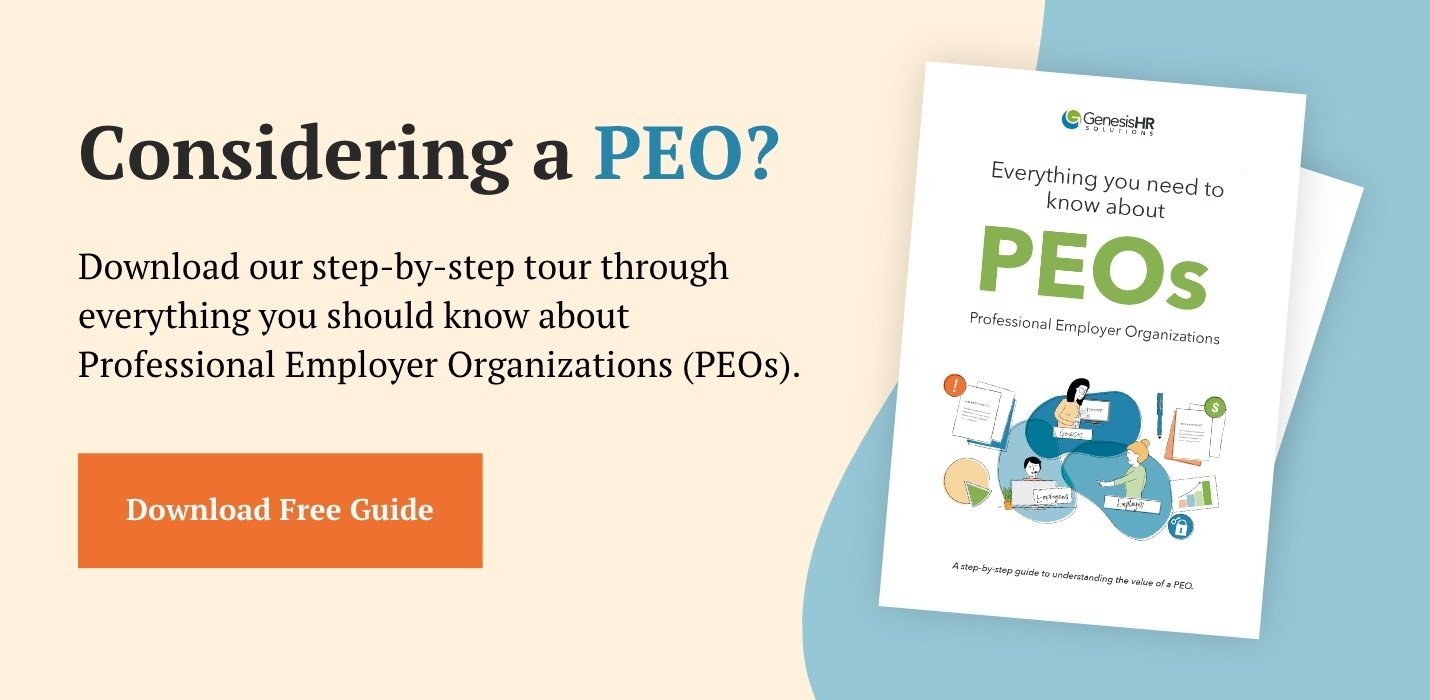 Business owners today are faced with a growing list of challenges to be successful. That list ranges from recruiting and training the right employees, to growing revenues and keeping clients happy, and everything in between. Often, the aspects of business that become most challenging involve the ever-expanding rules and regulations around employment.
Business owners today are faced with a growing list of challenges to be successful. That list ranges from recruiting and training the right employees, to growing revenues and keeping clients happy, and everything in between. Often, the aspects of business that become most challenging involve the ever-expanding rules and regulations around employment.
Whether it’s collecting the right information at hire, paying employees and taxes correctly, having an up-to-date handbook, maintaining compliance with the Affordable Care Act, handling terminations, or any other employment action—it’s enough to make your head spin (and potentially get you into trouble).
When it comes to managing the employment side of your business, there are many options to consider for help. There are a growing number of vendors who can assist you with various aspects of your human resource services.
- Payroll companies are common and will help you make sure you pay your taxes accurately and on time.
- Employee benefit brokers can help you put together a competitive benefits package for your employees.
- Human Resource consultants can assist you in making sure your handbook is up-to-date and with the right policies in place.
- Separate vendors are available for services like retirement plans, background checks, employee perks and discounts, safety training, unemployment management, flexible spending accounts, and more.
It can become a full-time job just managing all these relationships.
An alternative to numerous vendors is working with one partner that can manage all of these things for your business. Professional Employer Organizations (PEOs) do just this for small and midsized businesses. While the PEO industry is not a new one, many businesses are not aware of how much value they can bring.
What exactly is a PEO?
A PEO helps businesses manage complex employee-related matters such as employee benefits, human resource compliance, workers compensation, payroll tax compliance, and unemployment management. A PEO partners with your business to perform these processes, assume associated responsibilities, and provide expertise in all human resources matters. A PEO provides a suite of integrated services, often a tailored HR solution, to effectively manage your critical human resources responsibilities and employer risks.
Here are seven of the top reasons that your business should partner with a PEO:
- PEO clients are often able to offer a broader array of benefits to their employees than companies who don’t use PEOs
- PEOs remove the heavy burden, distractions, and worries of HR management. They allow you to focus on what you do best.
- Clients often receive savings on certain employee benefit plans by leveraging their relationship with a PEO.
- A PEO helps minimize threats to your business—everything from compliance, insurance, and record keeping to tax filings, immigration issues, and beyond.
- The employee turnover rate for PEO clients is 10-14% lower per year than that of comparable companies.
- Using a PEO as a single-source provider lowers your internal costs.
- Businesses that use PEOs are approximately 50% less likely to fail one year to the next when compared to similar companies.
A PEO delivers these services by establishing and maintaining an employer relationship with the employees at the client’s worksite and by contractually assuming certain employer rights, responsibilities, and risk.
How does a PEO relationship work?
PEOs and their clients sign a co-employment agreement, in which both the PEO and client company have an employment relationship with the worker. The PEO and client company share and allocate responsibilities and liabilities. The PEO assumes much of the responsibility and liability for the business of employment, such as risk management, human resource management, and payroll and employee tax compliance.
The client company retains responsibility for and manages product development and production, business operations, marketing, sales, and service. The PEO and the client share certain responsibilities for employment law compliance. As a co-employer, the PEO provides a complete human resource and benefit package for worksite employees.
Do you think a PEO is worth considering for your business?
If so, here are a few steps to help you find out which PEO might be the right fit for you. Most PEOs are similar, but differences in service model, benefits offered, billing method, and accreditation might be very important for your situation. Here’s what you can do:
- Investigate the PEO’s accreditations. Have their business practices been independently accredited by ESAC? Are they a current member of NAPEO, the national trade association of the PEO industry? Do they have proven financial strength and security? Do they comply with the industry’s performance practices?
- Explore the employee benefits offering of each PEO, paying special attention to the doctor’s network for the areas where your employees live. Also, make sure to compare the details of the plans versus your current plans to make sure you know what you are getting into. There are almost always differences with co-pays, deductibles, prescriptions, etc. Hopefully more of the differences are in your favor.
- Check within your network, and ask for client and professional references. Do you know anyone who has had success and would recommend partnering with a PEO?
- Research locally headquartered PEOs. Often times, a locally headquartered PEO will have better options for employee benefits. Ensure that they can handle multi-state employees, if needed. To find a service provider near you, you can search NAPEO’s online member directory.
- Explore your options and most importantly, give yourself time to evaluate. A minimum of 90 days prior to your renewal is recommended.
A growing number of business owners are looking for help managing the employment side of their businesses. Each year the rules and regulations seem to change, and the costs for employee benefits and other services continue to rise. Solutions to these issues can take a number of forms.
Could a PEO be the right solution for your business? Download our ebook below to find out more.




